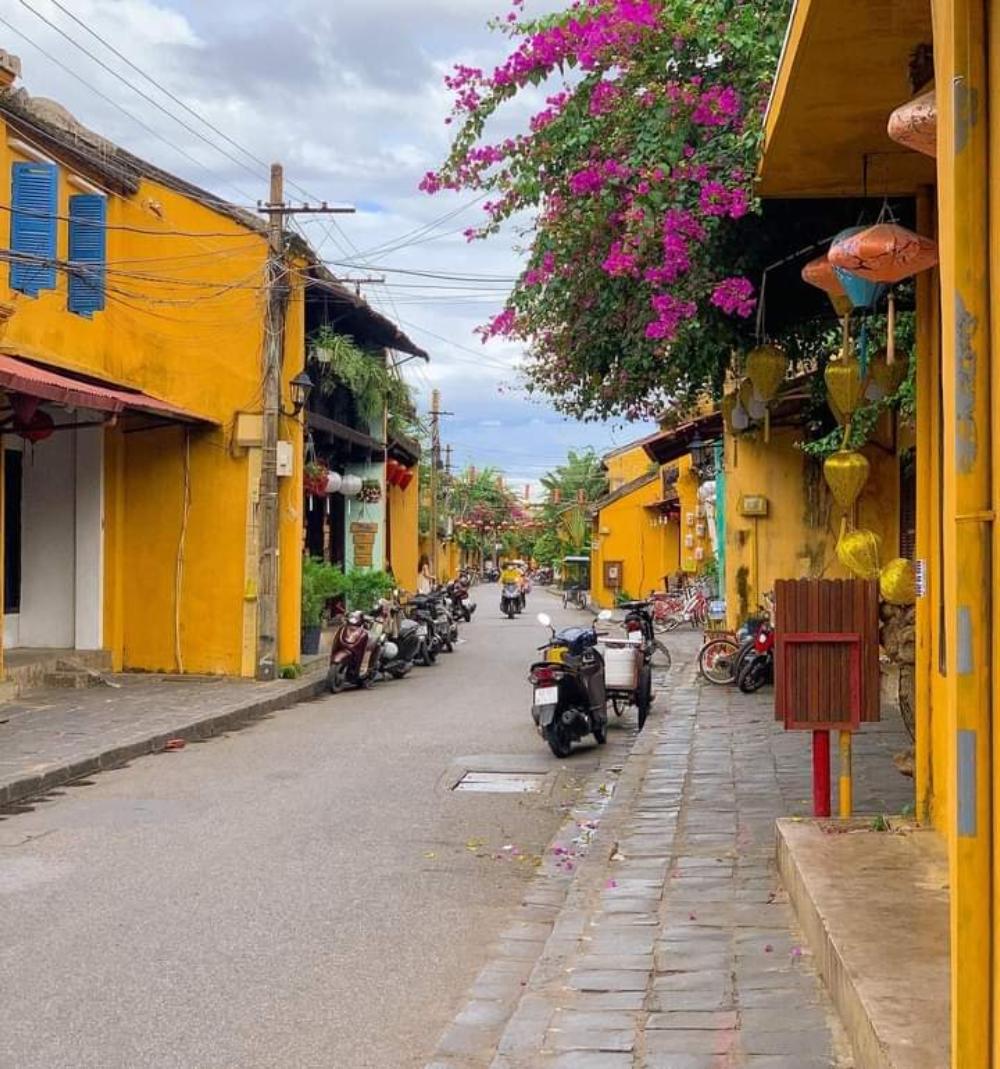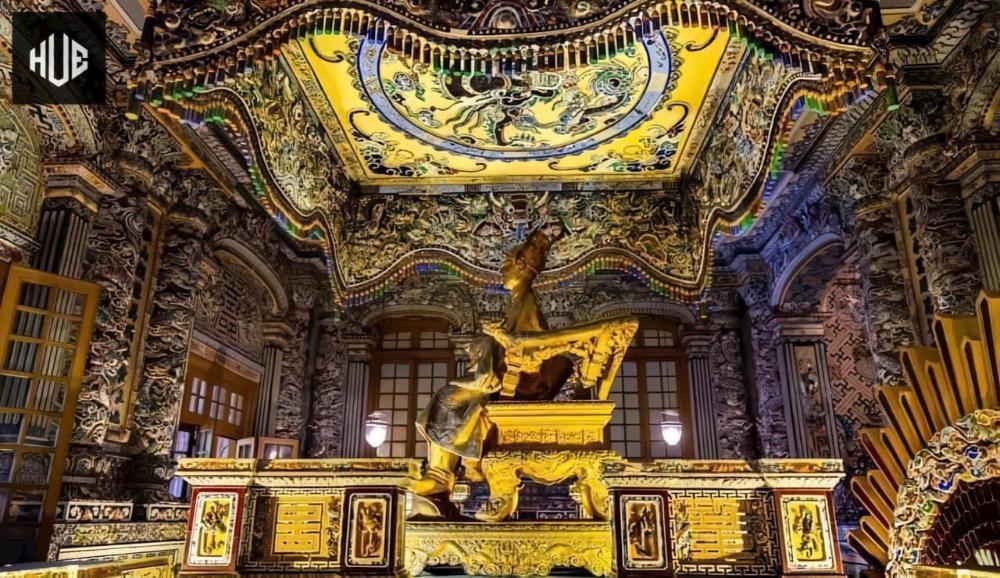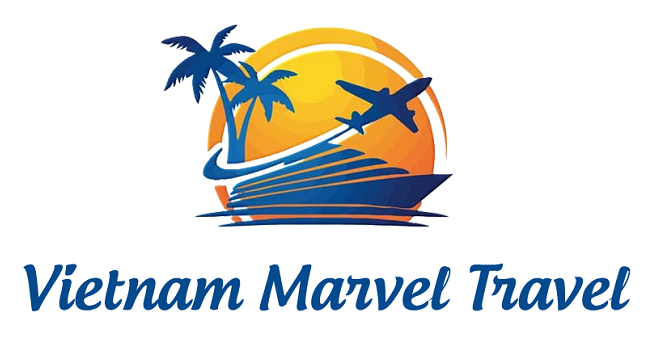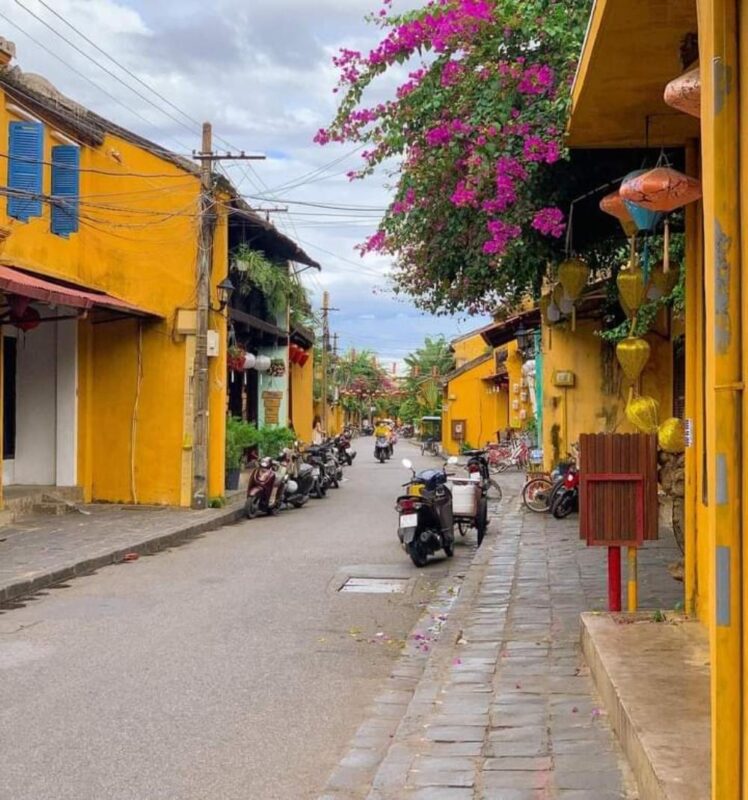25 Best Times to Visit Central Vietnam in 2026-2027: Ultimate Seasonal Guide
Central Vietnam captivates travelers with its perfect blend of cultural treasures and natural wonders. From the lantern-lit streets of Hoi An to the imperial grandeur of Hue and the pristine beaches of Da Nang, planning your visit requires strategic timing. This comprehensive guide reveals exactly when to experience Central Vietnam at its finest during 2026-2027, with expert insights on weather patterns, cultural events, and practical travel advice for an unforgettable journey.
Understanding Central Vietnam’s Unique Climate Patterns
Central Vietnam’s climate differs significantly from the country’s northern and southern regions. Unlike the four distinct seasons of the north or the consistent tropical climate of the south, Central Vietnam experiences a more dramatic weather pattern divided primarily into wet and dry seasons.
The Defining Monsoon Influence on Travel Planning
The Northeast monsoon and Southwest monsoon create distinct weather conditions throughout the year. What makes Central Vietnam particularly challenging for travelers is how these weather patterns can vary dramatically between nearby destinations. For instance, Hue might experience heavy rainfall while Da Nang, just 80km south, enjoys sunshine.
Recent climate data from the Vietnam Meteorological Department shows increasingly unpredictable patterns, with the 2025 forecasts indicating:
- Extended dry seasons (potentially lasting through mid-May)
- More concentrated but intense rainfall during wet months
- Higher average temperatures (0.5-1°C increase compared to previous decades)

Month-by-Month Weather Analysis for 2026-2027
January-February: Peak Dry Season Excellence
January and February stand out as premier months for visiting Central Vietnam. With temperatures ranging between 18-26°C (64-79°F) and minimal rainfall (averaging only 70mm across the region), these months offer ideal conditions for exploration.
The skies remain predominantly clear, humidity levels stay comfortable (55-65%), and the pleasant temperatures make outdoor activities enjoyable without the exhaustion that comes with summer heat.
Key advantages during this period:
- Perfect photography conditions with clear blue skies
- Comfortable temperatures for walking tours in ancient sites
- Refreshing sea temperatures (around 23°C) for beach activities
- Festive atmosphere during Tet celebrations (Vietnamese Lunar New Year)
March-April: Spring Perfection Before Summer Heat
March and April represent the golden transition period before summer’s intensity takes hold. Temperatures begin climbing (22-32°C) but remain manageable, especially with cooling sea breezes along coastal areas.
What makes these months particularly appealing is the balance between warm sunshine and relatively low humidity (60-70%). Rainfall remains minimal (50-80mm monthly), typically appearing as brief afternoon showers that quickly clear.
March stands out as perhaps the single best month for those seeking to experience everything Central Vietnam offers:
- Lush landscapes following the winter months
- Perfect beach conditions in Da Nang (UV index 9-10, use SPF 50+)
- Hoi An Ancient Town at its most photogenic
- Fewer crowds compared to holiday periods
May-June: Early Summer Advantages and Challenges
May marks the transition toward Central Vietnam’s summer season. Temperatures climb notably (26-35°C), and humidity levels increase (70-80%). While rainfall begins increasing (100-160mm monthly), precipitation typically comes as short afternoon thunderstorms rather than all-day downpours.
These months offer specific advantages:
- Lower accommodation rates as peak season winds down
- Vibrant green rice fields around Hoi An and Hue
- Excellent water visibility for snorkeling and diving near Cham Islands
- Extended daylight hours (approximately 13 hours) for sightseeing
However, travelers should prepare for:
- Intensifying heat, especially during midday (11am-3pm)
- Higher UV exposure requiring strict sun protection
- Occasional sudden downpours requiring flexible itineraries
July-August: Summer Heat and Early Wet Season
July and August represent challenging months for Central Vietnam travel. Temperatures peak (27-36°C) with high humidity (80-90%), creating uncomfortable conditions, especially for those unaccustomed to tropical heat.
Rainfall increases significantly (180-210mm monthly), with storms becoming more frequent and prolonged. Despite these challenges, these months coincide with international and domestic summer holidays, making popular destinations more crowded and expensive.
Travelers visiting during this period should:
- Plan indoor activities during the hottest midday hours
- Book accommodations with reliable air conditioning
- Consider mountain destinations like Bach Ma National Park, where elevations provide cooler temperatures
- Maintain flexible itineraries to accommodate weather disruptions
September-October: Peak Wet Season Caution
These months represent the most challenging time to visit Central Vietnam. Rainfall reaches its maximum (250-350mm monthly), with October historically seeing the heaviest precipitation. Flash flooding becomes a genuine concern, particularly in Hoi An’s Ancient Town and low-lying areas of Hue.
The Vietnam Disaster Management Authority recorded significant flooding events during October 2025, with several tourist areas temporarily inaccessible. Typhoon risk also peaks during these months, with potential for:
- Flight cancellations and transport disruptions
- Temporary closure of major attractions
- Dangerous coastal conditions
For those who must travel during this period:
- Purchase comprehensive travel insurance with weather-related coverage
- Add buffer days to your itinerary to accommodate delays
- Focus on urban experiences in Da Nang, which has better flood management infrastructure
- Consider alternative destinations in Southern Vietnam, which experiences different weather patterns
November-December: Return to Favorable Conditions
November marks the transition back to dry season conditions, though early November can still experience significant rainfall. By mid-November, precipitation decreases dramatically (120-90mm monthly), temperatures moderate (20-28°C), and humidity levels become more comfortable (60-70%).
December establishes itself as another excellent month for Central Vietnam travel with consistently dry conditions, pleasant temperatures, and festive atmosphere leading into the holiday season.
These months offer:
- Gradual decrease in tourist numbers after peak season
- Excellent value for accommodation and tours
- Ideal conditions for cultural exploration in Hue and Hoi An
- Perfect hiking weather in Phong Nha-Ke Bang National Park

Destination-Specific Recommendations for 2026-2027
Hoi An Ancient Town: Timing for Maximum Charm
Hoi An’s picturesque Ancient Town demands strategic timing to fully appreciate its magic. The UNESCO World Heritage site experiences significant flooding during peak wet season, sometimes requiring businesses to temporarily close.
Best times for Hoi An:
- February-April: Perfect weather coincides with monthly lantern festivals during full moons, creating magical photo opportunities
- December-January: Festive decorations and comfortable temperatures enhance the ancient town’s charm
Special events worth planning around:
- Lantern Festival (monthly on full moon nights)
- Tet celebrations (February 2026)
- Mid-Autumn Festival (September/October 2026)
For an authentic cultural experience, consider staying in Hoi An for 3-4 days to participate in activities like:
- Sunrise photography at fishing villages (5:30-6:30am)
- Cooking classes featuring Central Vietnamese specialties
- Bicycle tours through surrounding rice fields and villages
- Northern Vietnam exploration as a complementary experience
Hue Imperial City: Weather-Optimized Exploration
Hue’s extensive historical sites require comfortable weather for thorough exploration. The city’s location makes it particularly susceptible to heavy rainfall and occasional flooding.
Optimal timing for Hue:
- January-March: Perfect combination of cool temperatures and minimal rainfall for exploring outdoor historical sites
- November-December: Comfortable temperatures with diminishing rainfall
The Hue Festival 2026 (scheduled for April) represents a cultural highlight worth planning around, featuring:
- Imperial night performances
- Traditional boat races
- Cultural exhibitions and craft demonstrations
- Regional food festivals
When visiting Hue’s Imperial Citadel, allow a minimum of 4 hours for proper exploration, ideally during morning hours (8-11am) when temperatures remain most comfortable.
Da Nang: Beach Season Perfection
Da Nang’s appeal centers largely on its magnificent beaches and coastal attractions. Beach conditions vary dramatically throughout the year.
Beach season recommendations:
- March-May: Perfect beach weather with warm waters (25-27°C) and minimal rainfall
- January-February: Cooler but still excellent for beach activities with smaller crowds
For mountain excursions to Ba Na Hills and Marble Mountains, the dry season months (December-April) offer clearest views and safest hiking conditions.
Da Nang’s International Fireworks Festival (tentatively scheduled for June 2026) provides a spectacular reason to visit during the early summer, with teams from around the world competing in pyrotechnic displays over the Han River.
Phong Nha-Ke Bang National Park: Cave Exploration Timing
Phong Nha’s world-famous cave systems require careful timing due to water level fluctuations that can restrict access during wet periods.
Ideal cave exploration periods:
- February-April: Perfect conditions with moderate temperatures and accessible cave systems
- November-December: Reduced rainfall allows safe exploration with fewer tourists
The prestigious Son Doong Cave expedition (limited to 1,000 visitors annually) typically sells out months in advance. For 2026-2027 expeditions, bookings should be made by mid-2025 through authorized operators.
Cultural Festivals and Events Calendar 2026-2027
Central Vietnam’s rich cultural calendar provides excellent opportunities to experience authentic traditions and celebrations.
Major Festivals Worth Planning Around
Tet (Vietnamese Lunar New Year)
- Dates: February 17-22, 2026
- Experience: Region-wide celebration with flower markets, traditional performances, and family gatherings
- Travel impact: Accommodations book quickly; many businesses close for 3-7 days
Hue Festival 2026
- Dates: April 1-6, 2026 (tentative)
- Experience: Biennial cultural celebration featuring imperial costumes, traditional music, and historical reenactments
- Travel impact: Hotel rates increase 30-50%; advance bookings essential
Da Nang International Fireworks Festival
- Dates: June weekends 2026 (tentative)
- Experience: World-class pyrotechnic displays from international teams
- Travel impact: Waterfront accommodations book months in advance
Hoi An Lantern Festival
- Dates: Full moon of each month (lunar calendar)
- Experience: Ancient Town illuminated solely by traditional lanterns
- Travel impact: Accommodations in Old Town premium-priced on these dates
Practical Travel Tips for 2026-2027 Visits
Transportation Considerations by Season
Central Vietnam’s transportation infrastructure can be significantly affected by seasonal weather, particularly during the wet season.
Domestic flights:
- Highest reliability: December-April
- Most disruptions: September-November (typhoon season)
- Da Nang International Airport recorded 28% weather-related delays during October 2025
Train travel (North-South Reunification Line):
- Generally reliable year-round
- Occasional delays during heavy rainfall (September-October)
- Advance bookings essential during Tet and summer holidays
Road transportation:
- Hai Van Pass: Best experienced January-May for clear visibility
- Mountain roads to Phong Nha: Occasional landslides during wet season
- Coastal highways: Generally reliable year-round
Accommodation Strategy by Season
Central Vietnam’s accommodation landscape changes dramatically throughout the year, with significant price fluctuations based on seasonal demand.
Peak season (December-April):
- Book 3-4 months in advance for premium properties
- Expect 30-50% higher rates than shoulder season
- Minimum stay requirements common during holiday periods
Shoulder season (May-June, November):
- Excellent value with 20-30% discounts from peak rates
- Greater availability of premium rooms and experiences
- More negotiating flexibility for extended stays
Low season (July-October):
- Deepest discounts (up to 50% off peak rates)
- Many luxury properties offer significant value-added packages
- Some smaller establishments may temporarily close during September-October
For an exceptional Central Vietnam experience, consider dividing your accommodation:
- Historic boutique hotels in Hoi An Ancient Town
- Luxury beachfront resorts in Da Nang
- Heritage properties in Hue
Comprehensive Itinerary Suggestions Based on Season
Perfect Dry Season Itinerary (January-April, December)
Day 1-3: Hue Imperial Exploration
Begin your journey in the historical heart of Central Vietnam with:
- Full-day exploration of the Imperial Citadel (arrive at opening, 8am)
- Boat cruise along the Perfume River visiting royal tombs
- Culinary tour of imperial cuisine
- Day trip to Bach Ma National Park (weather permitting)
Day 4-6: Coastal Da Nang Experience
Travel south via the scenic Hai Van Pass to enjoy:
- Sunrise photography at My Khe Beach (5:30-6:30am)
- Day exploration of Marble Mountains and Son Tra Peninsula
- Cultural immersion at Da Nang Museum of Cham Sculpture
- Seafood feast along the Han River waterfront
Day 7-10: Hoi An Cultural Immersion
Complete your journey in Vietnam’s most atmospheric ancient town:
- Morning walking tour of Ancient Town before crowds arrive
- Bicycle excursion to Tra Que Vegetable Village
- Boat journey to Cham Islands for snorkeling (March-April optimal)
- Cooking class featuring Central Vietnamese specialties
- Continue your exploration with our 8-day comprehensive Vietnam tour
Shoulder Season Adaptable Itinerary (May-June, November)
Day 1-3: Da Nang Base Exploration
Begin in Da Nang for greater weather flexibility:
- Morning visits to beaches before afternoon heat
- Ba Na Hills day trip (morning departure to avoid crowds)
- Indoor activities during potential afternoon showers
- Evening food tours along the developing waterfront
Day 4-6: Hoi An with Weather Contingencies
Short transfer to Hoi An with adaptable plans:
- Ancient Town exploration during morning hours
- Spa and culinary experiences as afternoon alternatives
- Lantern-making workshops with local artisans
- Flexible scheduling around potential weather disruptions
Day 7-9: Hue with Strategic Timing
Conclude in Hue with weather-optimized scheduling:
- Early morning starts for outdoor imperial sites
- Museum visits during potential afternoon rainfall
- Evening street food tours in dry conditions
- Day trip options based on current weather patterns
Wet Season Strategic Itinerary (July-October)
Day 1-4: Extended Da Nang Base
Establish Da Nang as your weather-resilient base:
- Luxury accommodations with indoor facilities
- Morning beach activities when weather permits
- Shopping and cultural experiences during rainfall
- Day trips scheduled based on real-time weather forecasts
Day 5-7: Abbreviated Hoi An Visit
Shorter stay in flood-prone Hoi An:
- Accommodations outside Ancient Town flood zones
- Morning-focused exploration with afternoon flexibility
- Quick-access transportation back to Da Nang if needed
- Indoor cooking classes and craft workshops
Day 8-10: Selective Hue Highlights
Targeted visit focusing on accessible attractions:
- Citadel visit during optimal weather windows
- Museum-focused itinerary during heavier rainfall
- Culinary experiences in established restaurants
- Elimination of flood-prone tomb visits if necessary
For travelers interested in exploring beyond Central Vietnam, consider experiencing authentic Northern Vietnam to complement your journey.
Packing Recommendations by Season
Dry Season Essentials (December-April)
- Sun protection: Broad-spectrum SPF 50+ sunscreen, wide-brimmed hat, UV-blocking sunglasses
- Clothing: Light, breathable fabrics; long-sleeved options for sun protection and evening coolness
- Footwear: Comfortable walking shoes for historic sites; sandals for beaches
- Accessories: Reusable water bottle (tap water unsafe); day pack for excursions
- Technology: Portable power bank; camera with polarizing filter for vibrant landscapes
Transition Season Preparation (May-June, November)
- Weather adaptability: Lightweight rain jacket or poncho; quick-dry clothing
- Footwear: Water-resistant walking shoes
- Sun protection: Same as dry season plus umbrella (dual-purpose for sun/rain)
- Health: Mosquito repellent (DEET 25%+); first-aid kit with anti-diarrheal medication
- Technology: Waterproof phone case or bag; humidity-absorbing camera storage
Wet Season Necessities (July-October)
- Rain gear: High-quality waterproof (not water-resistant) jacket; waterproof backpack cover
- Footwear: Fully waterproof footwear for urban exploration
- Clothing: Quick-dry fabrics; multiple clothing changes
- Health: Enhanced first-aid kit including water purification tablets
- Documentation: Waterproof storage for important documents; digital backups
- Technology: Silica gel packets for electronics; comprehensive device insurance
Environmental Considerations for Responsible Travel
Central Vietnam faces increasing environmental challenges, with climate change impacts becoming more evident each year. Responsible travelers can minimize their impact by:
- Choosing accommodations with verifiable sustainability certifications
- Participating in community-based tourism initiatives that benefit local economies
- Avoiding single-use plastics (bringing reusable straws, bags, and bottles)
- Respecting marine environments when engaging in beach activities
- Supporting restaurants serving locally-sourced, seasonal ingredients
The Cham Islands Marine Protected Area has implemented a strict no-plastic policy, with visitors required to bring reusable alternatives or purchase them upon arrival.
Conclusion: Making Your Final Decision
The absolute best time to visit Central Vietnam in 2026-2027 falls between January and April, with March representing the perfect sweet spot of ideal weather, cultural activities, and manageable tourist numbers.
For budget-conscious travelers willing to navigate occasional weather challenges, November and December offer excellent value with increasingly favorable conditions.
Those absolutely determined to avoid crowds might consider May and June, understanding the trade-off of increasing heat and occasional rainfall.
Regardless of when you visit, Central Vietnam rewards travelers with extraordinary cultural experiences, breathtaking landscapes, and unforgettable culinary adventures. By aligning your visit with optimal seasonal conditions, you’ll maximize every moment of your journey through this remarkable region.
For a comprehensive Vietnam experience combining the highlights of Central Vietnam with other remarkable destinations, explore Vietnam Marvel Travel’s expertly crafted itineraries designed to showcase the country’s diverse natural and cultural wonders.
Contact Information
Website: vietnammarveltravel.com
Email: vietnammarveltravel@gmail.com
Phone: +84.978.358.422
WhatsApp: +84 978.358.422
Vietnam Marvel Travel – Your Gateway to Authentic Vietnam Experiences
Read Our Reviews: Check out genuine traveler experiences and ratings on Vietnam Marvel Travel Review on TripAdvisor to see why we’re the preferred choice for Vietnam adventures.

